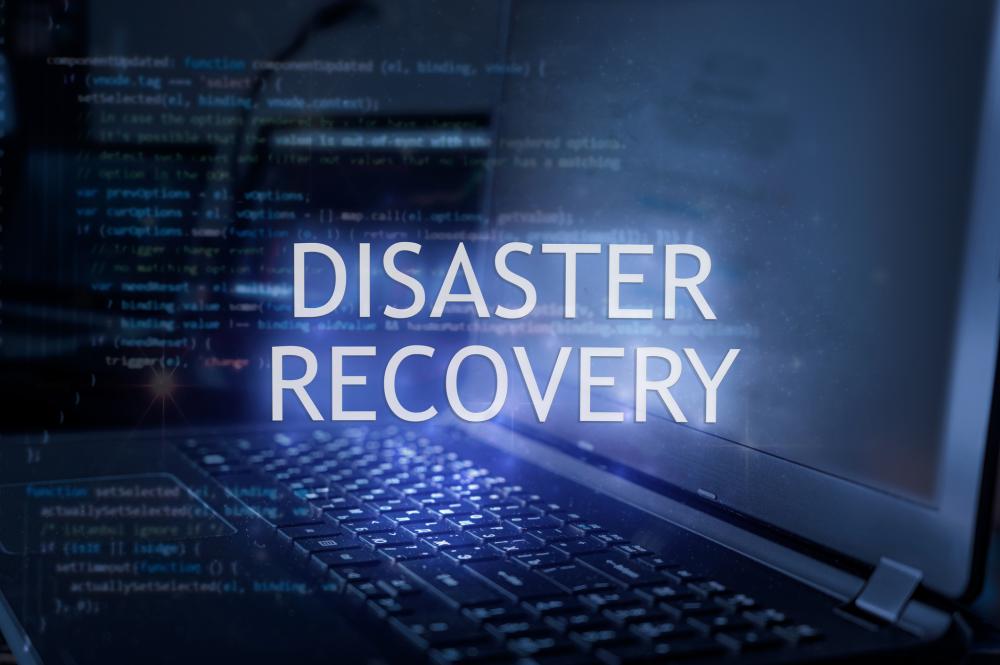By Bret Elliott, Managing Director - Information Technology and Cybersecurity
For electric cooperatives, which are integral to the provision of critical services within communities, the ability to recover from disasters and maintain business continuity is not just a regulatory requirement but a cornerstone of member trust and service reliability. The unpredictable nature of disasters—whether natural, such as hurricanes and wildfires, or man-made, including cyber-attacks—calls for robust planning and adaptive recovery strategies. Here’s how utilities, particularly electric cooperatives, can strengthen their disaster recovery (DR) and business continuity plans (BCP).
Comprehensive Risk Assessment
The first step in effective disaster recovery and business continuity planning is understanding the risks. Cooperatives need to conduct thorough risk assessments, identifying potential threats to their operations, from environmental hazards to technological risks. This assessment should be comprehensive, covering all facets of the utility’s operations, including power generation, transmission, distribution, and customer service platforms.
Infrastructure Resilience
Investing in resilient infrastructure is crucial for minimizing the impact of disasters. For utilities, this means upgrading systems such as smart grids which can isolate problems and minimize outages, and implementing robust cybersecurity measures to protect against digital threats. Resilience can also be enhanced by diversifying energy sources and integrating renewable energy solutions, which not only contribute to environmental goals but also add redundancy to the energy supply, reducing dependence on a single power source.
Advanced Data Management
Data is a critical asset in managing disaster recovery. Implementing advanced data management systems, equipped with artificial intelligence and machine learning, can help utilities predict potential failures and respond proactively. Moreover, ensuring data integrity and accessibility is vital. This involves regular backups, possibly in geographically diverse locations, and using cloud-based and/or immutable solutions to ensure data can be accessed and systems can be quickly restored, even if physical facilities are compromised.
Employee Training and Awareness
A well-trained workforce is essential in executing disaster recovery plans effectively. Regular training and drills should be conducted to ensure that every employee understands their role in a disaster scenario, from the technical staff responsible for system repairs to customer service representatives handling client communications. Training should also cover the use of emergency equipment and the execution of evacuation procedures if needed.
Robust Communication Strategies
Clear and reliable communication channels are vital during a disaster. Cooperatives should develop communication plans that include not only internal communication among employees but also external communication with customers, emergency services, and regulatory bodies. These plans should leverage multiple platforms, from traditional media to social media and mobile communication, to ensure messages can be disseminated quickly and efficiently.
Partnership and Community Engagement
Building partnerships with other utilities, local government agencies, and emergency responders can significantly enhance disaster response efforts. Collaborations can provide additional resources and facilitate coordinated response strategies, ensuring that efforts are not duplicated and resources are used efficiently. Engaging with the community is also crucial; cooperatives should educate their customers on emergency procedures and how to react during disasters to ensure their safety and reduce panic.
Regular Plan Updates and Drills
The effectiveness of any disaster recovery and business continuity plan hinges on its relevance and accuracy over time. Utilities must regularly review and update their plans to reflect new technologies, changing environmental conditions, and lessons learned from past incidents. Regular drills should be conducted to test the plans and make necessary adjustments based on their outcomes.
By implementing these strategies, electric cooperatives can not only enhance their resilience in the face of disasters but also ensure they are well-prepared to maintain continuity of operations, protecting their infrastructure, serving their communities, and upholding the trust placed in them by their members. This proactive approach is essential for navigating the challenges posed by both natural and man-made disasters in today's interconnected world.
BrilliT is a wholly-owned subsidiary of Rappahannock Electric Cooperative and was created to help co-ops tackle the IT and cybersecurity challenges of today's constantly evolving digital world.
About the Author Bret Elliott, Managing Director – IT & Cybersecurity, Rappahannock Electric Cooperative (REC), is a seasoned IT professional with a rich background in the field. With previous roles at Northrop Grumman, CapitalOne, CarMax, and as a Strategic Consultant for AvePoint, Bret brings a wealth of experience to his current position. Bret holds a B.S. in Industrial Management with a focus in Computer Science from Clemson University and an MBA from Winthrop University, where he was honored with induction into the Beta Gamma Sigma Honor Society.
Bret Elliott, Managing Director – IT & Cybersecurity, Rappahannock Electric Cooperative (REC), is a seasoned IT professional with a rich background in the field. With previous roles at Northrop Grumman, CapitalOne, CarMax, and as a Strategic Consultant for AvePoint, Bret brings a wealth of experience to his current position. Bret holds a B.S. in Industrial Management with a focus in Computer Science from Clemson University and an MBA from Winthrop University, where he was honored with induction into the Beta Gamma Sigma Honor Society.


